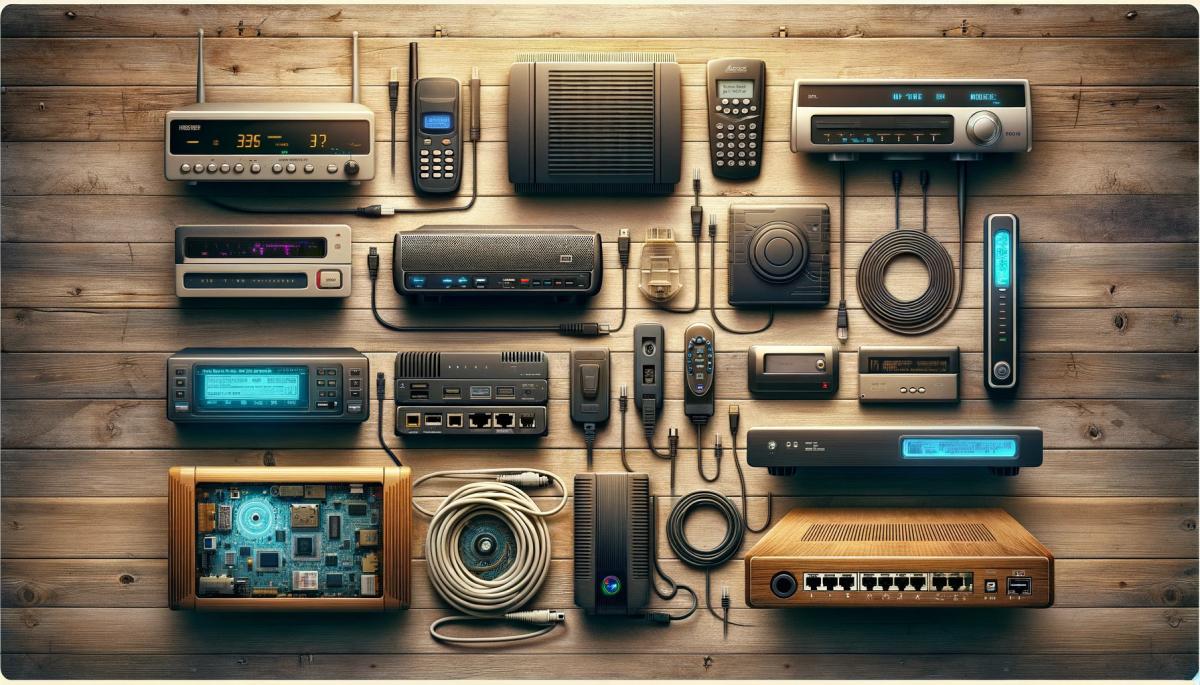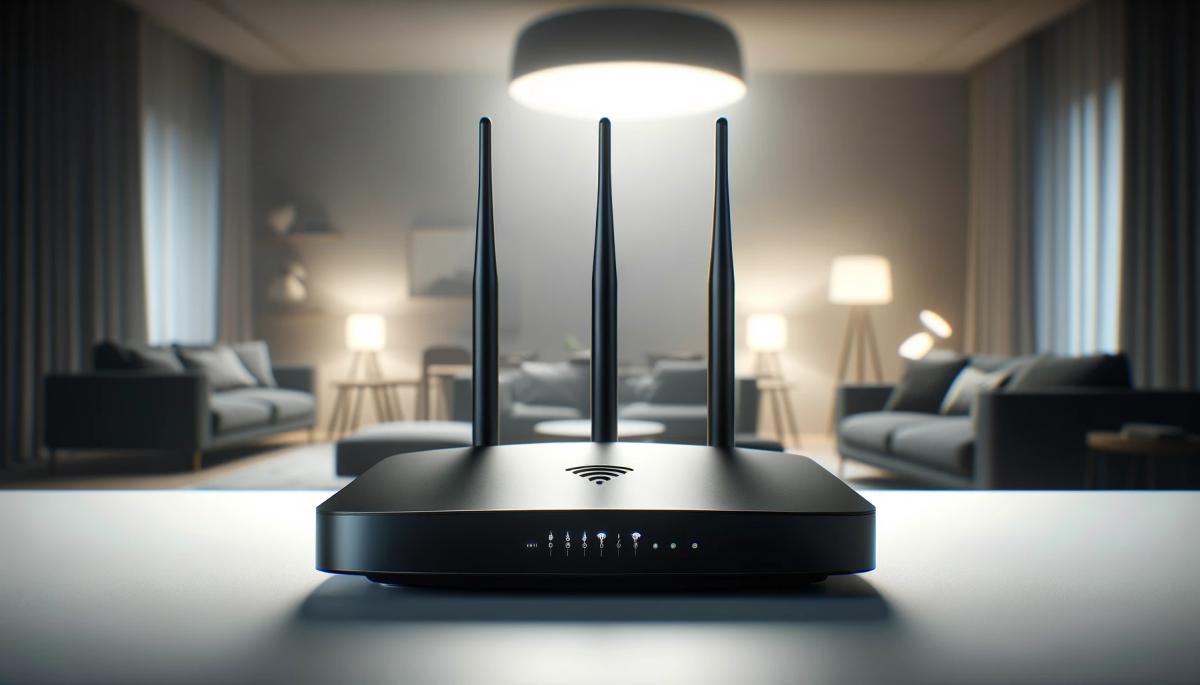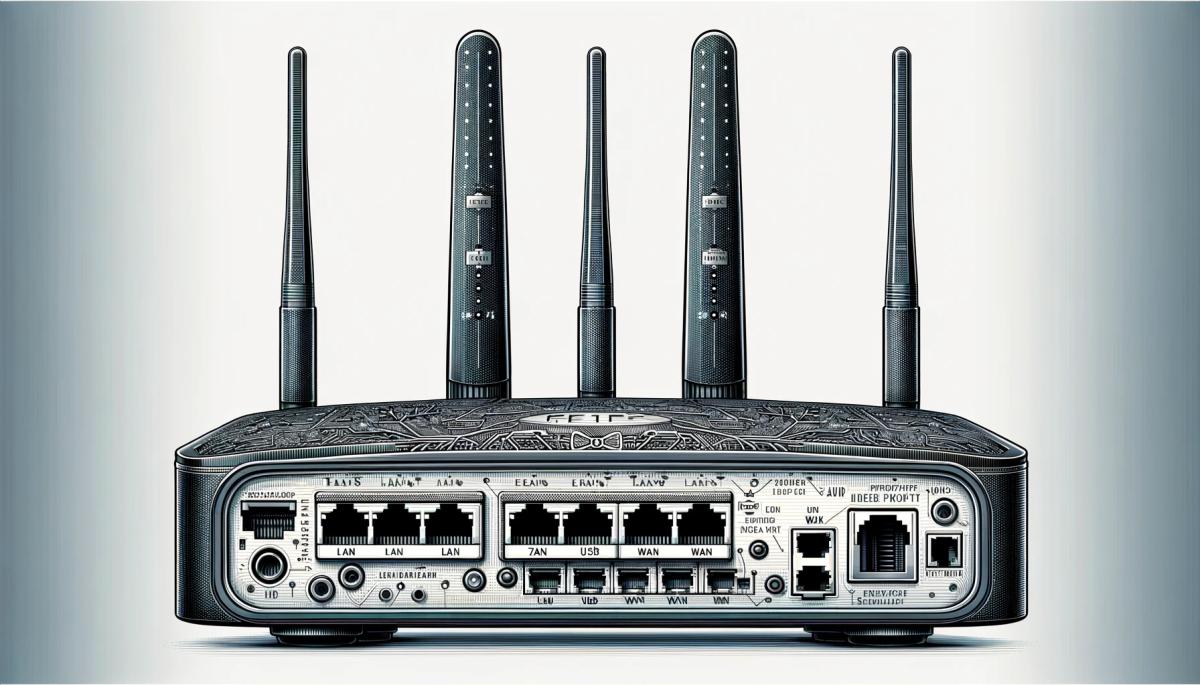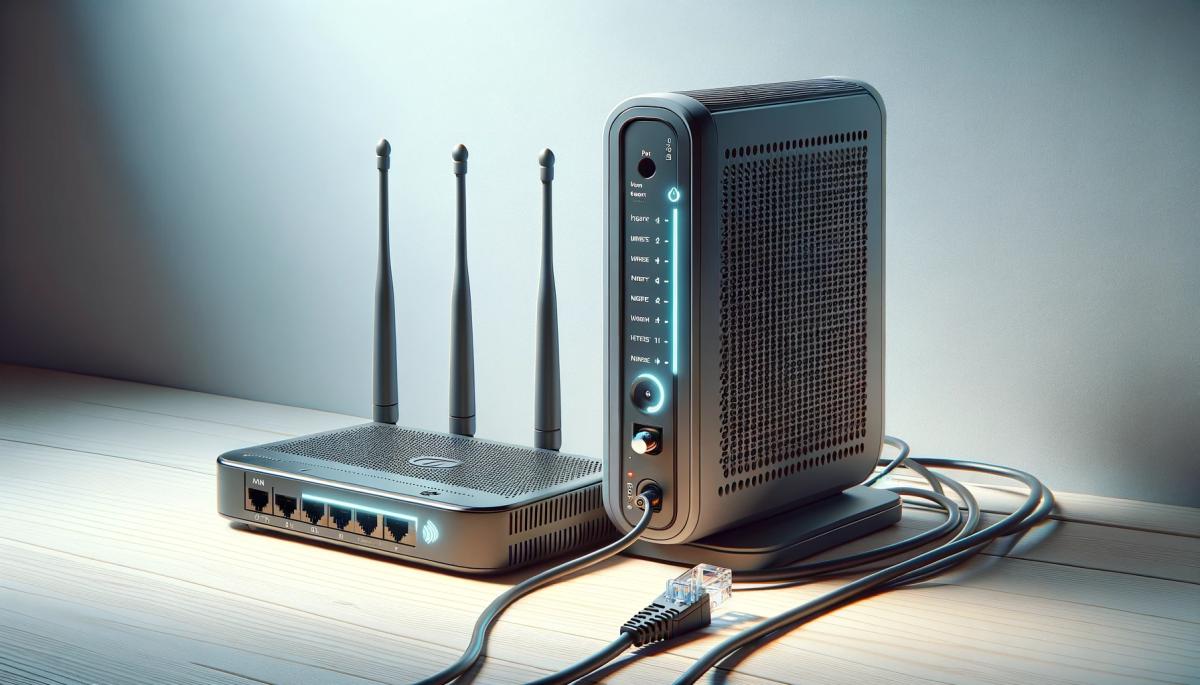Modem and router – two inconspicuous devices without which we cannot imagine life today. But do you actually know what they are used for and how they differ? Our article will help you navigate the flood of technical terms like WAN, LAN, DSL, or Wi-Fi. Find out how a modem connects your home to the internet and how a router manages data traffic between your devices.

The internet is taken for granted by most of us, but very few know how it actually works. Regular users get by knowing that they receive the internet through a modem or router and everything runs smoothly. However, a modem and a router are entirely different devices that are often confused. Let's take a look at how they differ and what they actually do.
What is a modem?
Modem is short for Modulator and Demodulator, which refers to its function of modulating and demodulating signals. While it may sound complicated at first, there's no need to worry. The main thing to know is that a modem is used to convert data so that it can be sent and received through an internet connection, or wide area network (WAN) of your chosen provider.
Regarding how they connect to the internet, you can encounter several types of modems:
- DSL modem – uses a telephone line for connection;
- Cable modem – uses a cable television line;
- Satellite modem – communicates via satellite connection;
- Modem with Wi-Fi router – a universal device intended for receiving wireless LTE, 4G, or 5G signals;
- Optical Network Terminal (ONT) – uses optical cables for extremely fast connections, where light signals are used for decryption, functioning similarly to Morse code. You may also encounter devices that combine ONT and a router.
TIP: A wide area network (WAN) refers to a network covering a broad geographical area – it could be a city or an entire country. In contrast, a local area network (LAN) represents your home network, which you can create easily using a router.

How does a modem work?
In short, a modem is the point that connects your home to the internet. For some types of internet connections, digital data must be modulated to an analog signal. So, if you decide to visit a website, the command will be given digitally in the form of zeros and ones.
The modem takes this data and modulates it into an analog form. The signal then travels to your provider's data center, where it's demodulated back into digital format. This entire process takes place within milliseconds.
What is a router?
A router is a device that manages data traffic within your home LAN network. Its task is to efficiently distribute data among connected devices in your home or office. With its help, you can share data not only among devices but also with the modem – which connects your network to the internet.
Most available routers offer additional functions, including:
- QoS (Quality of Service) for data prioritization,
- blocking selected devices,
- blocking pre-selected websites,
- creating your own hotspot.
If you decide to purchase a new router, you cannot just grab the first device you see in the store. It greatly depends on how you want to distribute internet around your home and what you expect from it. You can generally come across four types:
- Cable router – distributes internet connection solely through an Ethernet cable. Thanks to the cable connection, it offers higher quality and stability.
- Wireless router – distributes internet connection using radio waves through a Wi-Fi network. On the other hand, it might be more susceptible to interference due to other wireless devices, physical obstacles or neighboring Wi-Fi networks.
- Edge router – located at the edge or border between two networks. It’s often used to connect a company's network with the internet.
- VPN router – configured to handle VPN connections, providing protection to all connected devices, not just those where VPN provider applications can be installed.
TIP: A router can also work independently, creating a home LAN network for sharing data among multiple devices.

How does a router work?
In a nutshell, a router functions as a control station for all devices connected to the network. Its primary task is deciding how and where data should travel. When a device on the network requests communication with another device, it sends a data packet to the router.
The router then examines the packet's header, determines the destination address, and decides where to send it. In most cases, this will involve sending data between a device and the modem. However, you can also set it up to share data between connected devices.
Modem vs router – what's the difference?
As you have seen, a modem and a router are certainly not the same devices. Besides their purposes, they differ in several other aspects, which we will discuss below in more detail.
Design
Modems are usually smaller and less complex than routers. They are equipped with just a few LED indicators that show connection status. Generally, it's a small box with a few ports. On the other hand, a router is larger and equipped with more ports or antennas for spreading the Wi-Fi signal. However, you can also find modems with routers.
Number of ports
You can distinguish a modem from a router by the number of available ports. A modem typically has one WAN port for internet connection and one LAN port for connecting to a router – there are models with more ports, but even so, it's not recommended to connect a device directly to the modem for security reasons. A router, on the other hand, offers more LAN ports for connecting multiple devices simultaneously.

Functions
The main differences between a modem and a router lie in their functions, which complement each other. A modem is designed to connect the internet to a device or an entire home network, sometimes involving modulating and demodulating signals. In short, a modem is your direct access point to the WAN.
If you want to connect multiple devices or distribute Wi-Fi around the house, you cannot do without a router. Its function is to sort and distribute data among multiple devices. In connection with this, it creates a local home network (LAN) which can function even without an internet connection.
The difference also lies in the firmware of both devices. A modem uses basic firmware offering no extra features. In contrast, a router is a much more complex device capable of not only routing data but also performing advanced tasks, like blocking websites or prioritizing data.
Security
Most modems have no protection features. They rely on the router, which comes with a range of security functions including a firewall that can block unwanted websites. WPA/WPA2 is also included for securing wireless networks. Some routers might even have the more advanced WPA3 protection.
Position in the network
The modem is the first point that connects your network to the internet. Behind it sits the router, responsible for distributing the internet connection among devices within the network. There are now modems with built-in Wi-Fi routers available, so you only need one device.
Connection
One can view both devices differently in terms of connection. The only device directly connected to the internet is the modem since it can modulate and demodulate data. The router, unable to do this, serves solely to distribute the internet connection among multiple devices.

TIP: Besides a router, you can also encounter a network switch. On its own, it cannot create a LAN, but when connected to a router, it more efficiently links devices. The main difference is the precise sending of data, which is sent to one specific device instead of all devices at once. It also offers a higher number of LAN ports for connecting more devices.
How does internet connection work with the help of a modem and router?
If you've read this far, you already know that a modem and router are completely different devices that complement each other. To fully understand, we should also look at how the whole process works in practice.
Imagine you want to play a video on YouTube and you have a classic DSL modem:
- You click on the video you want to play, and your device sends the command to the router in the form of data packets.
- The router receives, processes the request, and forwards it to the modem.
- The modem modulates digital data into an analog signal and sends it to your internet provider.
- They receive the request and demodulate the analog signal back to digital form, allowing the server to process the request.
- Then the digital signal is modulated into an analog signal and sent back to the modem.
- The modem demodulates the signal back to digital and passes it to the router.
- The router processes the request, forwards the data to your device, and the video plays.
The process also depends on the type of internet connection you use. With cable and DSL internet, the signal needs to be demodulated and modulated. On the other hand, wireless and fiber-optic internet use only digital signals, so this function is not needed.
If you want to connect your home or office to the internet, you can't do without a modem. Although you can connect the necessary devices to it, from a security perspective, it's not the best decision. For connecting multiple devices, it's better to get a router. With its help, you create a home LAN network, to which you can connect devices via Wi-Fi or cable.
If you are unsure about choosing the right modem or router, don't hesitate to consult your provider. They can advise you on which specific devices are suitable for the given type of connection, or at least tell you what parameters you should focus on during the selection process.
Wireless charging: What are its benefits, limitations, and where is it heading?

Wireless charging has evolved from a luxury feature to a standard part of most modern phones. Simply place your mobile on the pad, and energy begins to flow without searching for a cable and connector. We explain how wireless charging works, what it entails, and why Qi and Qi2 technologies have become the new standard of convenience.
What is Wi-Fi 7? What changes does it bring and when does it make sense to switch

Today's home Wi-Fi network is under increasing pressure. It has to handle video calls, online gaming, and dozens of smart devices. The new Wi-Fi 7 standard offers a solution that takes wireless connectivity to the next level. We'll explain what this standard means in practice and why it might be crucial for the future of home and business networks.
What is DNS? Everything you need to know about its functionality and setup

When you type a website address into the browser, the correct page loads in an instant. This is managed by the DNS system, without which the internet as we know it would not exist at all. In this article, you will learn what DNS is, how it works, what types of records it contains, and why it is important for both speed and security of the connection.
How does fiber optic internet work and what do you need for its installation?

Fast and stable connection is a basic necessity in every household today. The solution is fiber optic internet, which works differently than regular cables and offers greater reliability to users. We'll explain how this technology works in practice, what it entails to run a fiber optic cable to your home, and what equipment you’ll need to keep everything running smoothly.
Cloud gaming – the end of consoles in sight?

Cloud gaming allows you to play games from anywhere without the need for expensive hardware. In this article, you'll learn how game streaming works, what advantages and limitations it brings, and which services are leading the way today. And most importantly: can it really threaten traditional consoles?
Chips under the skin and in the head. The future is closer than we think

Brain microchips already allow controlling a computer with mere thoughts. In the article, you will learn how they work, what they have brought to the first users, and what promises scientists and Elon Musk associate with them. Along with hopes, questions about safety, ethics, and where this technology might take us also arise.